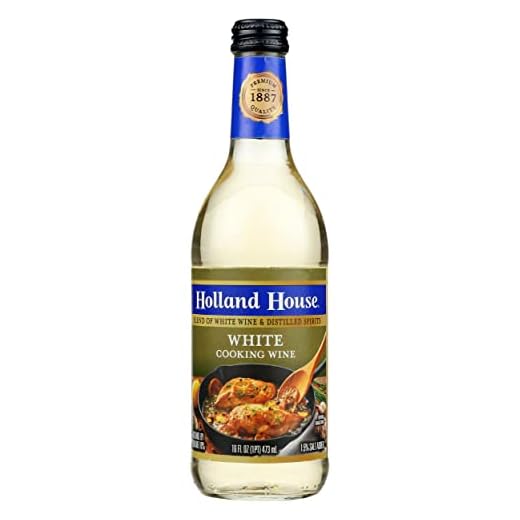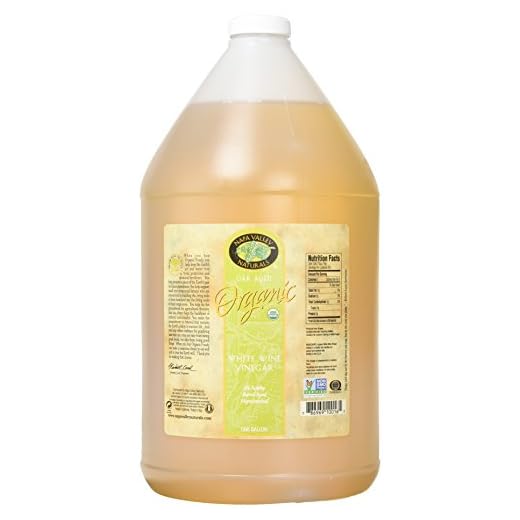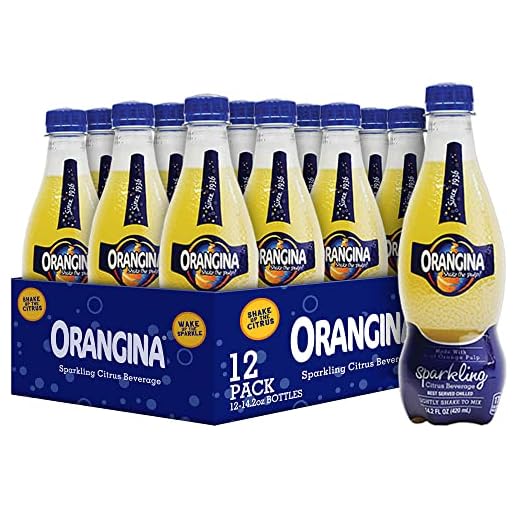



If you find yourself without that bottle of crisp, chilled beverage, consider using white grape juice as a straightforward alternative. Its natural sweetness and acidity can mimic the flavor profile of wine, making it perfect for deglazing pans or enhancing sauces.
A splash of apple cider vinegar offers a tangy kick, ideal for marinades or salad dressings. Dilute it slightly with water to soften the intensity, ensuring it complements rather than overpowers other ingredients.
Broth serves as another excellent option, especially vegetable or chicken broth, which can add depth and savory notes to your dish. The rich umami flavors can enhance stews and braises, providing a comforting base.
Coconut milk is a delightful choice for creamy dishes, imparting a subtle sweetness and richness. This works particularly well in curries or sauces where a richer texture is desired.
Experimenting with citrus juices, such as lemon or lime, can introduce a bright, zesty flavor, perfect for seafood or poultry. Their acidity and freshness can elevate the overall dish without the need for fermented beverages.
Substitutes for White Wine in Culinary Creations
For those moments when a bottle of pale vin is unavailable, several alternatives can deliver similar flavor profiles and acidity to enhance your dishes. Here are my top suggestions:
- Apple Cider Vinegar: Mix with water at a 1:1 ratio. This option offers acidity and a hint of sweetness, making it a good choice for marinades and sauces.
- White Grape Juice: Use it straight or dilute with a splash of vinegar for a balanced flavor. This works well in sauces and dressings.
- Lemon Juice: Freshly squeezed, it adds brightness and acidity. Use sparingly to avoid overpowering the dish.
- Chicken or Vegetable Broth: This creates a savory base, particularly in risottos and soups. Opt for low-sodium varieties for better control over seasoning.
- Sparking Water with a Splash of Vinegar: This combination mimics the effervescence and tang of wine, suitable for deglazing pans.
Experiment with these substitutions to find the perfect match for your culinary needs. Each option has unique characteristics that can complement various dishes.
For those looking to maintain quality in their home projects, consider investing in a best comercial pressure washer for efficient cleaning of kitchen tools and equipment.
Understanding the Role of White Wine in Cooking
In culinary applications, this beverage serves multiple purposes, enhancing flavor profiles and adding depth to dishes. Its acidity helps to balance richness, while its fruity notes can complement various ingredients, from seafood to poultry.
When simmered or reduced, the liquid evaporates, leaving behind concentrated flavors that elevate the overall dish. The fermentation process provides a unique complexity, often adding layers of taste that other liquids may not achieve.
In marinades, this liquid acts as a tenderizer, breaking down proteins and infusing dishes with a refreshing brightness. It’s not just about the flavor; the alcohol cooks off, allowing the essence to blend seamlessly into the dish.
Many chefs rely on this ingredient for deglazing pans, lifting browned bits from the bottom and creating a rich sauce. The ability to highlight the natural flavors of ingredients makes it a staple in many kitchens.
In summary, the contribution of this beverage to dishes goes beyond mere flavor; it creates an intricate balance and enhances the dining experience. Understanding its role can greatly impact the outcome of your culinary endeavors.
Top Non-Alcoholic Substitutes for White Wine
For a non-alcoholic alternative, consider using white grape juice. This option provides a similar sweetness and acidity, making it ideal for marinades and sauces. To balance its sweetness, add a splash of vinegar, like apple cider or white wine vinegar.
Citrus Juices
Fresh lemon or lime juice serves as an excellent substitute. The bright acidity mimics the tartness of a good white varietal, enhancing the overall flavor profile of your dishes. Use it in dressings and seafood preparations for a refreshing twist.
Broth Variants
Vegetable or chicken broth can effectively replace the depth that a fine white would bring. It adds umami and moisture to your meals. For a hint of acidity, mix in a bit of vinegar or lemon juice to achieve a more complex flavor.
Apple cider can also work well, especially in recipes where a touch of sweetness is desirable. Its fruity notes can complement many ingredients, making it a versatile choice for various culinary applications.
In summary, whether you’re looking for sweetness, acidity, or depth, these non-alcoholic options provide excellent alternatives that won’t compromise the integrity of your dishes.
How to Use Vinegar as a White Wine Alternative
Vinegar can effectively mimic the acidity and tang of fermented grapes in culinary applications. For a straightforward substitution, use a ratio of three parts broth to one part vinegar. This combination maintains flavor integrity while introducing the necessary acidity.
For dishes requiring a more nuanced profile, consider using white wine vinegar. It offers a similar taste without the alcohol, making it an ideal match for seafood or light sauces. Use it in equal amounts as you would typically use the fermented grape beverage.
In cases where depth is needed, apple cider vinegar can provide a pleasant fruity note. While slightly sweeter, it works well in marinades or dressings, especially when balanced with additional herbs or spices.
Rice vinegar is another excellent option, particularly in Asian-inspired dishes. Its mild flavor enhances without overpowering other ingredients. Use it in stir-fries or vinaigrettes in a 1:1 ratio.
For a more robust flavor, try balsamic vinegar. Its sweetness and complexity can enrich sauces or braises. However, use it sparingly, as its strong flavor can dominate; a tablespoon may suffice in most cases.
Always remember to adjust other seasonings to balance the dish’s overall profile. With these tips, vinegar can seamlessly fill the gap left by the absence of fermented grape beverages, enhancing your culinary creations. Enjoy experimenting!
Exploring Broths and Stocks as Flavor Boosters
Using broths and stocks serves as an excellent method to enhance flavors in dishes that typically call for fermented grape juice. Chicken, vegetable, or fish stocks introduce a rich depth that complements various ingredients, making them a worthy substitute.
For instance, when sautéing vegetables or preparing sauces, adding a splash of chicken stock can provide a savory foundation while keeping the dish moist. Vegetable broth is perfect for lighter fare, like risottos or soups, imbuing them with a nuanced taste without overpowering the other elements.
Choosing the Right Broth
Selecting the appropriate stock is crucial. For seafood preparations, fish stock enhances the natural flavors without overshadowing the main components. Meanwhile, a robust beef stock can add richness to hearty dishes like stews or braises, replicating the complexity often contributed by fermented beverages.
Enhancing Flavor Profiles
To further elevate the taste, consider simmering aromatics such as onions, garlic, or herbs in the stock before incorporating it into your meal. This technique intensifies the flavor and creates a layered effect, making it an effective alternative. Experimenting with homemade stocks allows for customization, tailoring the taste to match your culinary vision.
Fruits and Juices: Sweet Alternatives to White Wine
Consider using apple juice for its crisp acidity and natural sweetness. It pairs well with poultry and seafood dishes, providing a fresh flavor profile without overwhelming the palate.
Pineapple juice offers a tropical twist, bringing both sweetness and tang. This option works beautifully in marinades and glazes, especially for pork and chicken, enriching the dish with a fruity depth.
For a more subtle option, try using grape juice. It delivers a mild sweetness and a hint of acidity, making it suitable for risottos and sauces, enhancing the overall flavor without being too dominant.
Citrus juices, like lemon or lime, can also be a great addition. Their bright acidity can elevate flavors in various dishes, particularly in seafood or vegetable preparations, mimicking the zesty notes found in many white wines.
Below is a comparison table of fruit juices and their culinary applications:
| Juice | Flavor Profile | Best Used In |
|---|---|---|
| Apple Juice | Crisp, sweet | Poultry, seafood |
| Pineapple Juice | Tropical, tangy | Pork, chicken marinades |
| Grape Juice | Mild, sweet | Risottos, sauces |
| Lemon Juice | Bright, acidic | Seafood, vegetables |
| Lime Juice | Tart, zesty | Salsas, dressings |
These alternatives not only enhance dishes but also maintain the intended balance of flavors, making them excellent substitutes in a variety of culinary contexts.
Adjusting Seasonings When Omitting White Wine
To enhance flavor profiles while forgoing the inclusion of a certain fermented grape beverage, consider these precise adjustments to seasonings:
- Acidity Balance: If using a citrus juice alternative, reduce the amount of vinegar or any acidic component in the dish. A teaspoon of lemon or lime juice can effectively brighten flavors without overwhelming tartness.
- Herbal Infusion: Increase fresh herbs like parsley, basil, or thyme. They can replicate the complexity and aromatic qualities often contributed by the omitted ingredient, enriching the overall taste.
- Salt Variation: Adjust salt levels carefully. If substituting with broth, which is often saltier than the beverage, taste before adding additional salt to avoid over-seasoning.
- Sweetness Level: When using fruit juices, consider decreasing any added sugar or sweetening agents. The natural sweetness from fruits can enhance dishes without the need for extra sugar.
- Umami Depth: Incorporate umami-rich ingredients like mushrooms or sun-dried tomatoes. These can add depth and complexity, compensating for the flavor profile usually provided by the fermented beverage.
These tailored adjustments ensure a harmonious balance in the dish, maintaining the desired flavor without relying on the initial component.








